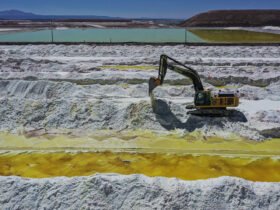
EPA to study tap water carcinogens — Science News, November 16, 1974
There is evidence that clean drinking water in some localities may contain carcinogenic compounds. Many of the compounds detected contain chlorine and some scientists think chlorine added to purify the water may be combining with organic substances not removed during filtration to form the dangerous substances.
Update
Those findings hastened the passage of the Safe Drinking Water Act, which authorized the U.S. Environmental Protection Agency to set minimum standards for levels of contaminants (SN: 3/29/75, p. 208). Chlorine is still used to kill waterborne pathogens, but the EPA limits levels of its by-products trihalomethanes and haloacetic acids. Long-term exposure to these chemicals has been linked with an increased risk of cancer. Now, the agency is targeting lead and PFAS, or forever chemicals, which have been linked with myriad health problems (SN: 11/29/22). The EPA recently set standards for PFAS and mandated that most lead pipe service lines be replaced within a decade.
Source link












Leave a Reply